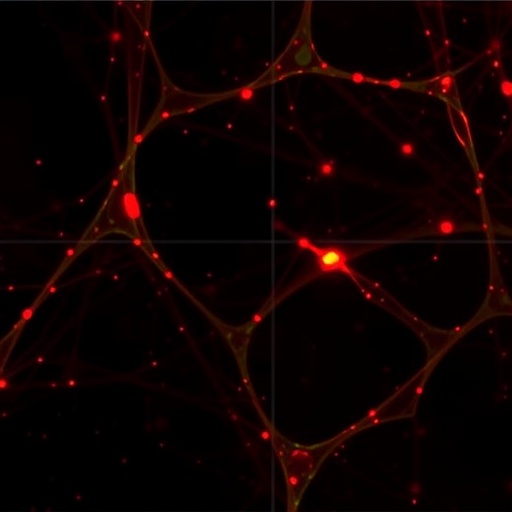Detailed analysis of two brain tumor subtypes has revealed that they may originate from the same type of neural progenitor cells and be distinguished by gene mutation patterns and by the composition of their microenvironments. The results of a study led by investigators at Massachusetts General Hospital (MGH) and the Broad Institute of MIT and Harvard are being published in the March 31 issue of Science.
"Our study redefines the cellular composition of two closely related gliomas characterized by mutations in the IDH gene – astrocytomas and oligodendrogliomas," says Mario Suvà, MD, PhD, of the MGH Department of Pathology and the Center for Cancer Research, co-senior author of the Science paper. "While we know these are genetically distinct tumor types, we did not know whether they had similar cells of origin or if their expression differences could be explained by genetics, by the cells from which they developed, or by the tumor microenvironment."
Several recent studies, including The Cancer Genome Atlas, have identified mutations driving tumor growth and defined tumor subtypes based on analyzing gene expression in tissue samples that include both tumor cells and cells from the surrounding microenvironment. But the fact that these analyses are done in bulk pieces of tumors masks many critical pieces of information.
Single-cell RNA sequencing, which measures RNA transcription on a cell-by-cell basis, offers detailed insights into tumor biology but can only be done in a limited number of tumors due to financial and logistic constraints. The MGH team hypothesized that combining single-cell RNA data from a limited number of tumors with existing bulk expression data from large study groups could reveal many key aspects of brain tumor biology.
Both astrocytomas and oligodendrogliomas are considered incurable, but surgery and radio/chemotherapy can significantly extend survival. The tumors are believed to develop from subtypes of the glial cells that support and protect neurons and are known to differ in terms of genetics, appearance and gene expression. While both types of tumor contain cells similar to the glial cells for which they are named — astrocytes and oligodendrocytes – they also each contain markers of both cell types, calling into question the common belief that they originate in those distinct cell types.
Combining RNA sequencing results from more than 9,800 cells from 10 astrocytomas and more than 4,300 cells from 6 oligodendrogliomas with 165 bulk expression profiles from The Cancer Genome Atlas revealed that both types of tumor contained three different types of cancer cells: nonproliferating cells that have differentiated into either astrocyte- or oligodendrocyte-like cells as well as cells that resemble neural stem or progenitor cells and drive tumor growth. Differences between the two types of tumor appear to be determined primarily by genetic differences and in the composition of the tumor microenvironment, such as the abundance of specific immune cells.
"We were surprised to find that cancer cells from these two tumor subtypes share similar stem cell programs and glial lineages of differentiation," says Suvà. "Additionally, we observed that cancer cells that become more differentiated do not proliferate, even in more advanced tumors. That suggests that pushing cells towards differentiation — something we currently do not know how to do in patients — could significantly halt tumor growth. As these tumors share stem cell programs that drive their growth, an alternative approach could be to target specific cell types with immunotherapies. We now plan to use similar approaches to study other types of adult and pediatric gliomas to get additional insight into their origins and the programs driving their aggressiveness."
###
Mario Suvà is an assistant professor of Pathology at Harvard Medical School, MGH Pathology and MGH Center for Cancer Research. The study was co-directed by Aviv Regev, PhD, professor of biology at Massachusetts Institute of Technology, core member and director of the Klarman Cell Observatory at the Broad Institute, and a Howard Hughes Medical Institute investigator.
The first authors of the Science paper are Andrew Venteicher, MD, PhD, of Suvà's team at MGH, and Itay Tirosh, PhD, of Regev's Broad Institute group. Additional co-authors making critical contributions to the work include Daniel Cahill, MD, PhD, and Brian Nahed, MD, MGH Neurosurgery. Support for the study includes the Smith Family Foundation, the V Foundation for Cancer Research, the American Cancer Society, the National Cancer Institute, the Rachel Molly Markoff Foundation, the Howard Hughes Medical Institute and the Klarman Family Foundation.
Massachusetts General Hospital, founded in 1811, is the original and largest teaching hospital of Harvard Medical School. The MGH Research Institute conducts the largest hospital-based research program in the nation, with an annual research budget of more than $800 million and major research centers in HIV/AIDS, cardiovascular research, cancer, computational and integrative biology, cutaneous biology, human genetics, medical imaging, neurodegenerative disorders, regenerative medicine, reproductive biology, systems biology, photomedicine and transplantation biology. The MGH topped the 2015 Nature Index list of health care organizations publishing in leading scientific journals and earned the prestigious 2015 Foster G. McGaw Prize for Excellence in Community Service. In August 2016 the MGH was once again named to the Honor Roll in the U.S. News & World Report list of "America's Best Hospitals."
Media Contact
Katie Marquedant
[email protected]
617-726-0337
@MassGeneralNews
http://www.mgh.harvard.edu
############
Story Source: Materials provided by Scienmag




